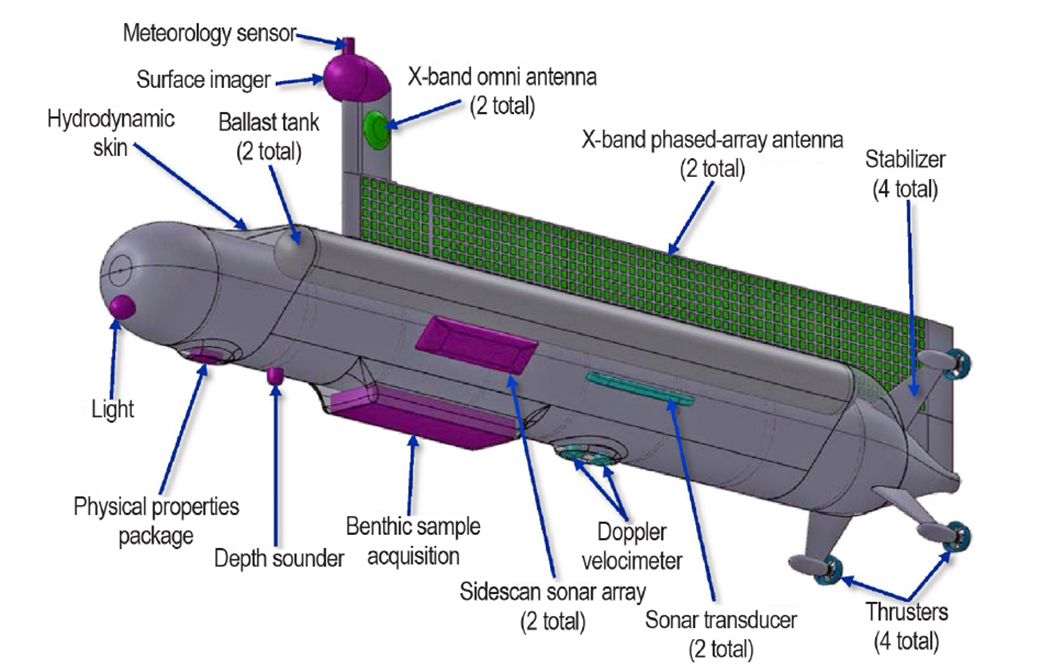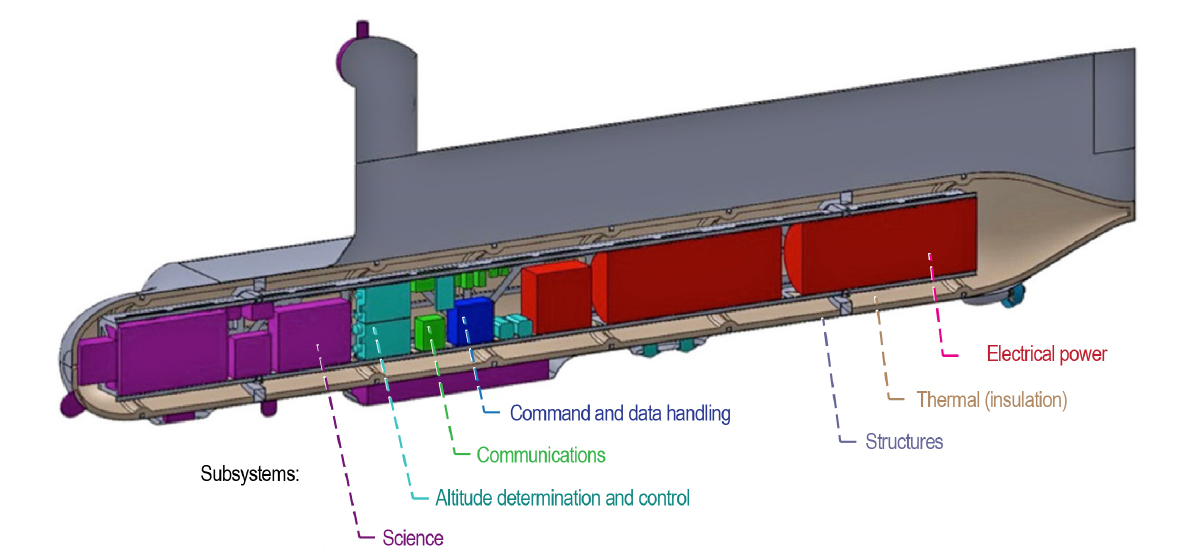
The first aircraft to adopt winglets were within the general aviation and business jet communities. In the mid-’80s, Boeing produced the 747-400 commercial jetliner, which used winglets to increase its range.
According to industry, since first introduced to fleets, NASA-developed winglets have saved airlines approximately 4 billion gallons of jet fuel..
Winglets also help reduce carbon dioxide emissions as the result of the reduced fuel use, and also help reduce aircraft noise on takeoffs and landings.
Steven Oleson
NASA Glenn Research Center
Description
Phase II of the Titan Submarine: Exploring the Kraken Mare effort will focus on advancing the Technology Readiness Level (TRL) of the concept by (1) retiring risks found in the Phase I design, (2) gathering new Kraken Sea observations by Cassini, and (3) further defining science goals and instruments to fulfill them; each of these tasks will feed into two COMPASS design sessions. All of these products should ready the Titan Submarine (Titan Sub) concept to a confidence level that allow further NASA investment. The major risks found in the Phase I conceptual design center around vehicle operations in a liquid hydrocarbon sea. Basic physics questions of operating in this cryogen need to be answered. Cryogenic experts at the NASA Glenn Research Center will develop models to explore mixtures and pressures of cryogens and gases and how they would react with a warm submarine. Results from these models will be used to refine the ballast and propulsion system conceptual designs as well as feed into development of a hydrodynamic fluid models at the Pennsylvania State University Applied Research Laboratory for evaluating the conceptual design. Cassini continues to observe both the constituents (remotely) and the depth of the northern Titan Seas. Up-to-date data will be gathered and used as inputs for the modeling mentioned above. These data, along with the above analysis results, will be used to refine the science goals, concept of operations, and instrument suite for the Titan Sub. These activities will be led by the Johns Hopkins University Applied Physics Laboratory. The Phase II efforts will be strengthened by workshops at selected science and cryogenic conferences that will include scientists, cryogenic engineers (including the liquid natural gas industry) respectively, as well as NASA project planners to review the Titan Sub concept and add direction and experience to the challenges it faces. The results of both the above efforts will feed into a COMPASS current engineering design run to update the current Titan Sub conceptual design to mature the concept. Launch and delivery options will be explored (in Phase I funds were not sufficient to design more than the Sub itself) on how to deliver this long cylindrical submarine. Risks of an exposed phased-array antenna to communicate directly back to Earth will also be explored. A second COMPASS run will develop a Titan Sub that would be delivered as part of an orbiter system. The presence of an orbiter would greatly simplify several aspects of the submarine design, especially delivery and communications.
































